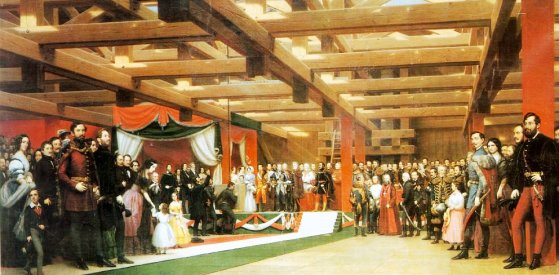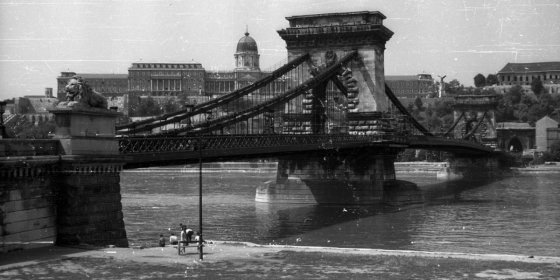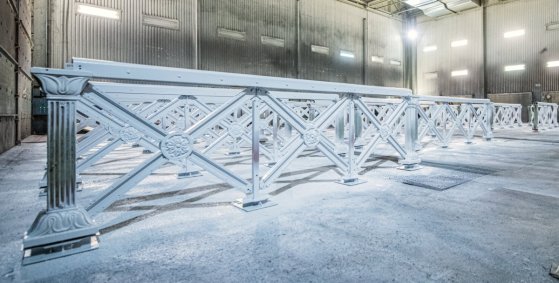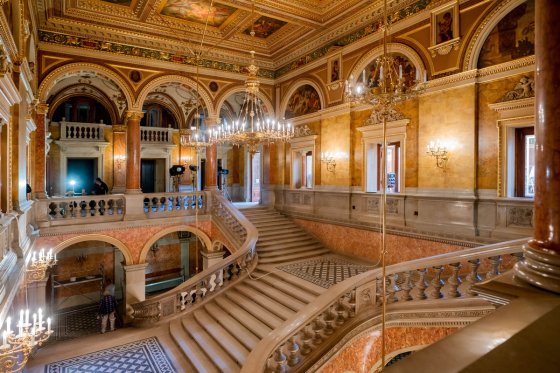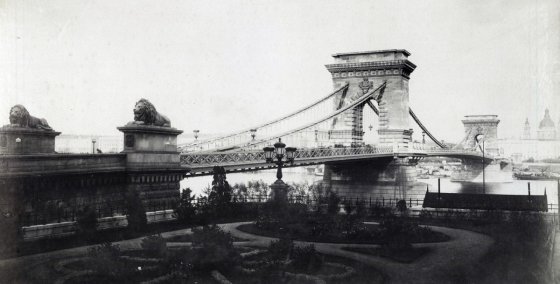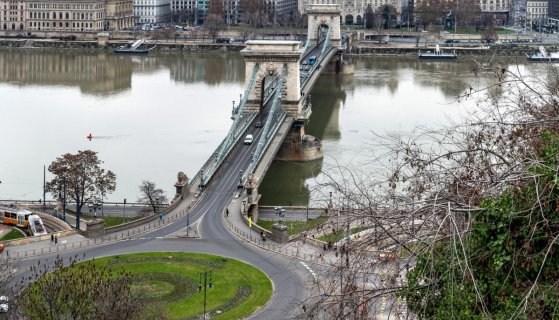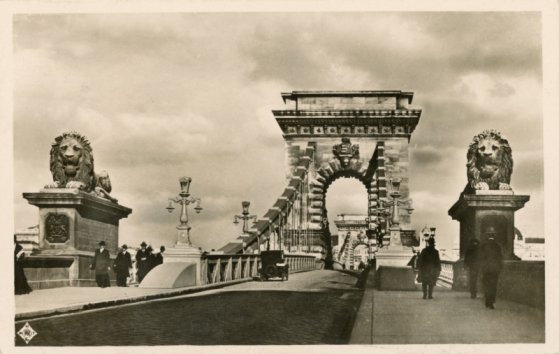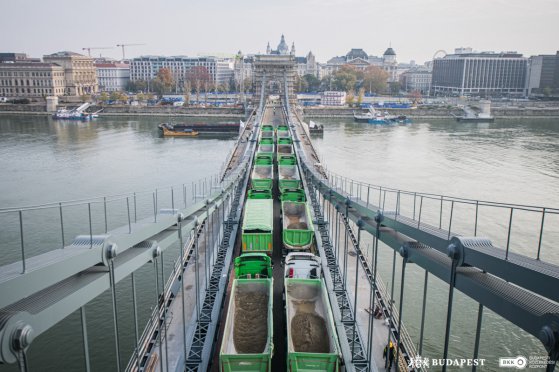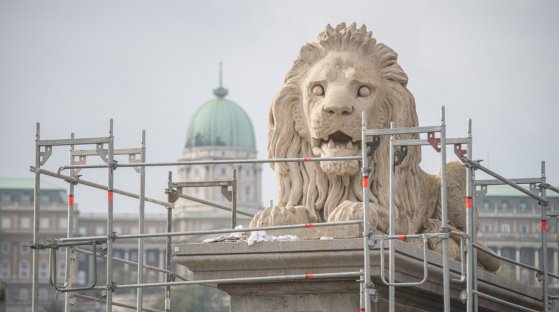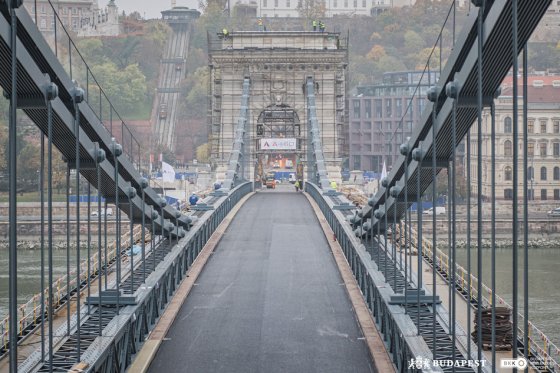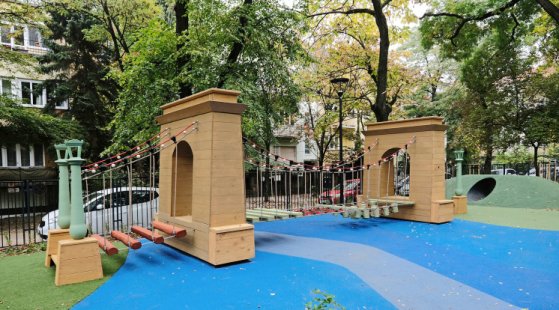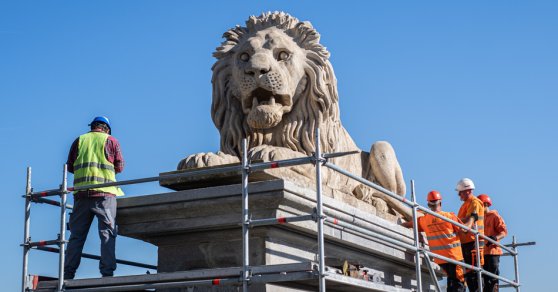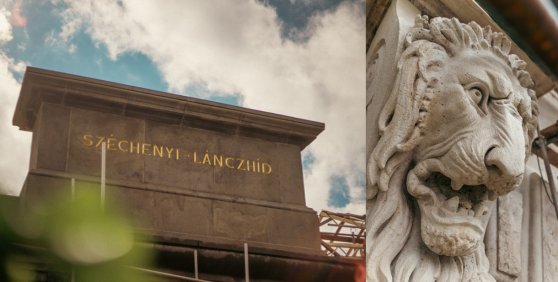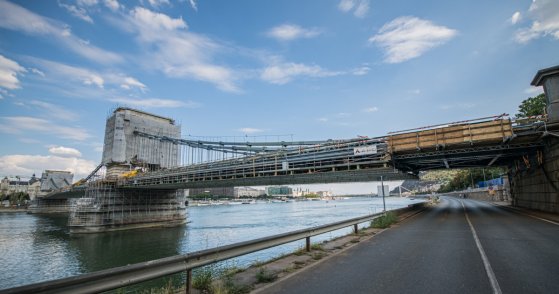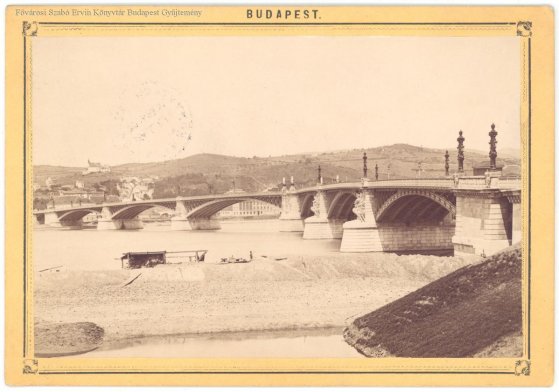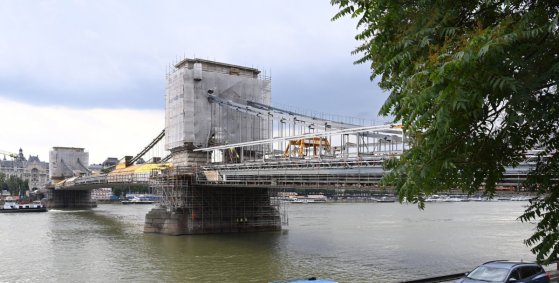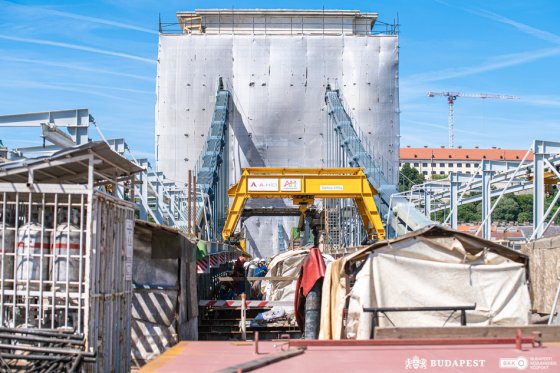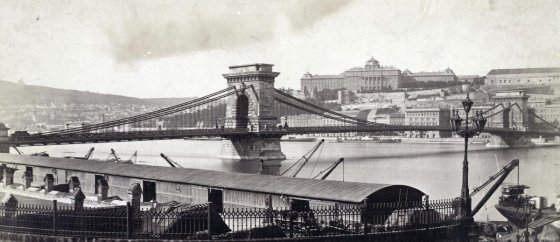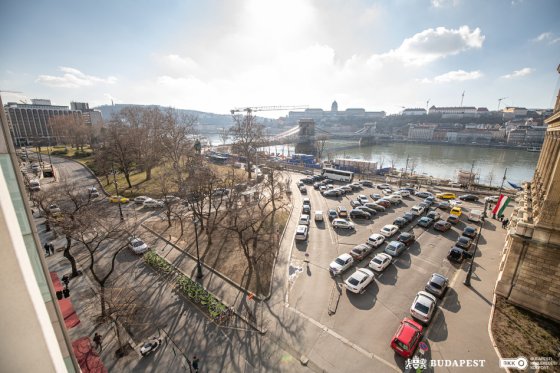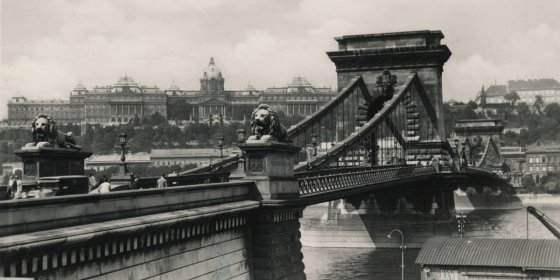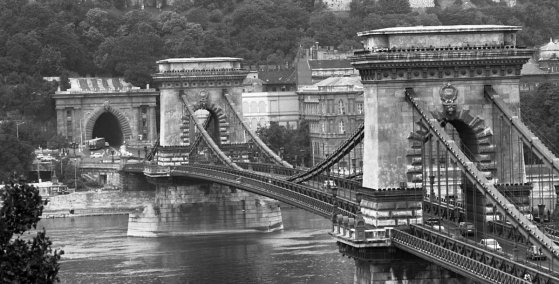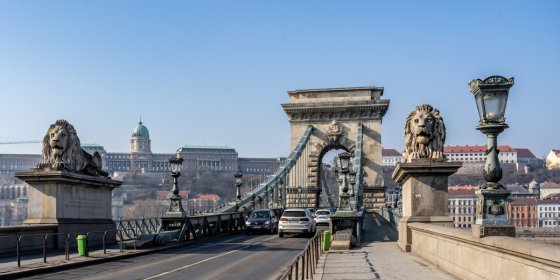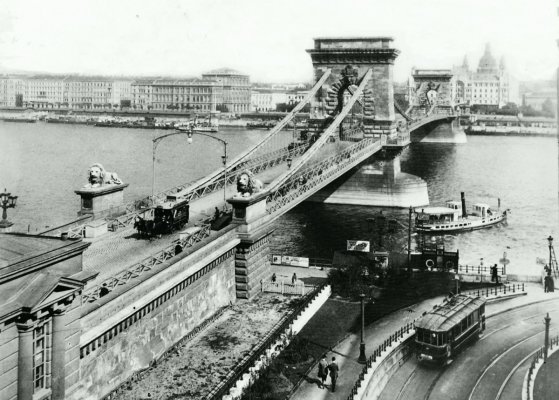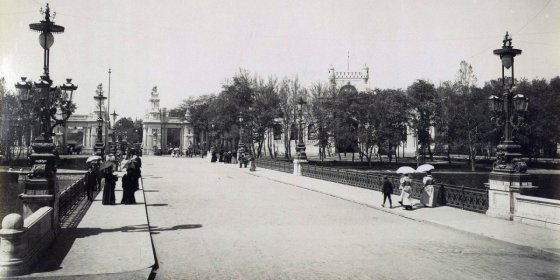 Drama on the university wall - The heroic monument was planned 95 years ago
In the constant hustle and bustle of the Egyetem Square in Pest, the students may not even notice the monument that decorates the short section of wall between the church and the central building of ELTE. However, it commemorates their predecessors, the heroes who fought for their country in World War I, and those who heroically helped them. The first design of the dramatically collapsing soldier was born in 1928, ninety-five years ago.
Drama on the university wall - The heroic monument was planned 95 years ago
In the constant hustle and bustle of the Egyetem Square in Pest, the students may not even notice the monument that decorates the short section of wall between the church and the central building of ELTE. However, it commemorates their predecessors, the heroes who fought for their country in World War I, and those who heroically helped them. The first design of the dramatically collapsing soldier was born in 1928, ninety-five years ago.
Chain Bridge
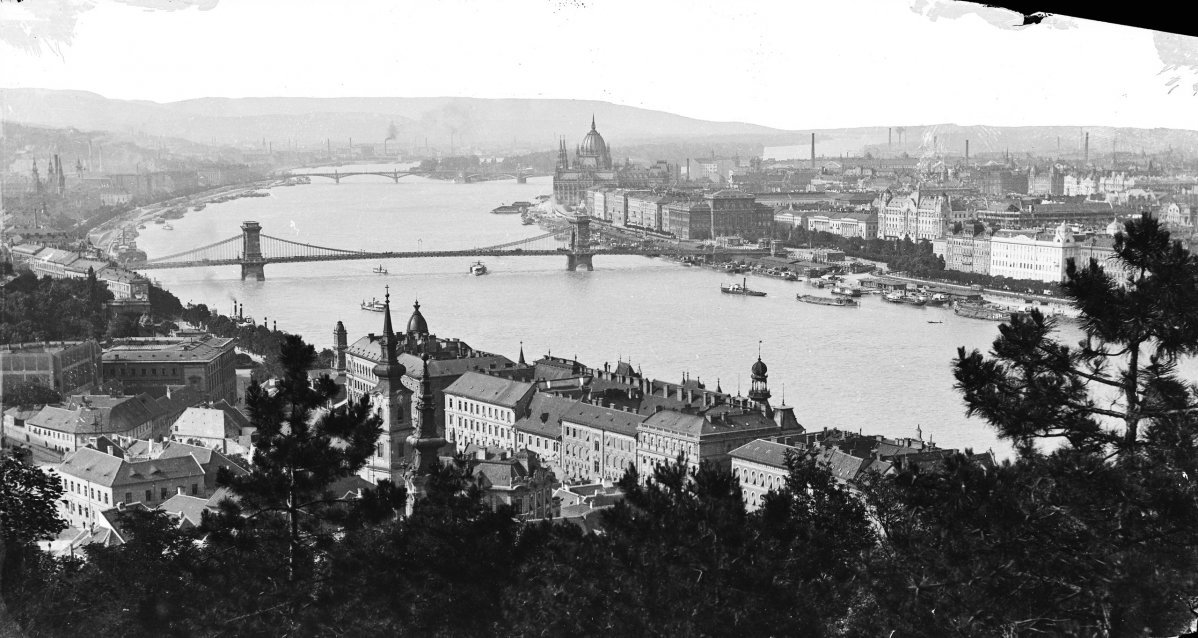 The „intertwined history” of the bridges and the city of Budapest
The „intertwined history” of the bridges and the city of Budapest
February 8, 2025 at 3:00 PM
Which ideas and events have shaped the fate of bridges of Budapest and the cityscape? Alongside many other interesting facts, this question is also answered this newly published book by the Budapest City Archives, which introduces the history of bridges in Budapest.
The Bridge Report, which brought a turning point in the history of Budapest
March 31, 2023 at 3:00 PM
A travel report that changed the history of Pest and Buda, as well as Hungary. The little book contributed to the change of half a thousand years of legal customs and the implementation of an investment of unprecedented size and technical quality. This book was The Bridge Report [Hídjelentés in Hungarian].
Who also painted the construction of the Chain Bridge: Miklós Barabás died 125 years ago
February 17, 2023 at 12:30 PM
We can confidently say that Miklós Barabás was one of the most outstanding artists of the Reform era, the first painter who earned the respect of society with his artistic work. During his long career, he made portraits of many important and well-known personalities, including Mihály Vörösmarty, János Arany, Ferenc Deák, Palatine Joseph, and even Franz Joseph. The capital also often provided the subject of his pictures. He achieved great success with his paintings, and the press regularly reported on his current works. It was thanks to his exceptional talent that he managed to gain fame at a time when the work of painters was not yet highly valued.
The Chain Bridge was closed 50 years ago as well
February 16, 2023 at 1:30 PM
The Chain Bridge was closed 50 years ago as well, as after its reconstruction in 1949, it needed to be renovated again. The works were timed for the 100th anniversary of the unification of Pest, Buda and Óbuda. The old painting had to be removed from a surface of 73,000 square metres, but at that time the 1949 coat of arms was also replaced with the version current in 1973.
The railings of the Chain Bridge are being painted
January 31, 2023 at 7:30 PM
They are already painting the railings and historical elements returning to the sidewalks of the Chain Bridge. A significant part of the bridge's 704-metre railing structure was remanufactured due to damage caused by rust. Eight arched parapet castings are reconstructed based on archival photos to match the appearance of the Chain Bridge in 1914-1915.
This is how Budapest developed in 2022 - Several public buildings were handed over this year
December 31, 2022 at 11:00 AM
2022 will almost certainly go down in history with a negative tone, as it was burdened by a series of crises from which Hungary could not extricate itself. Nevertheless, Budapest developed very nicely, many investments were completed this year: several new buildings were completed and many monuments were restored. On the last day of the year, Pestbuda looks back and summarises the events of the year.
Merger of Buda, Pest, Óbuda and Margit Island: 150 years ago the city unification law was announced
December 22, 2022 at 12:30 PM
Budapest is one of the most beautifully situated capitals in the world, something Hungarians can be really proud of. It is always nice when a foreigner marvels spectacularly, for example, at the panorama from the Castle. But Hungarians owe these ecstatic expressions not only to the gift of nature but also to the built environment created by our ancestors. Buda and Pest have lived in each other's neighbourhood for centuries, yet their unification provided the impetus that later resulted in so many fantastic buildings on both banks of the Danube. At the end of 1872, after a long history, the parliament passed a law on the merger of the cities, which was approved by the monarch on 22 December 1872 and was announced the next day.
The Chain Bridge has been handed over, but cars and pedestrians cannot drive over it yet
December 17, 2022 at 11:00 AM
From 16 December, the road on the Chain Bridge is available for those travelling with BKK vehicles, taxis, bicycles, motorcycles and mopeds. The bridge is scheduled to open to pedestrians in the fall of 2023.
The Chain Bridge will be opened on Friday: buses, taxis, motorbikes and bicycles can use it again
December 13, 2022 at 5:00 PM
From 16 December, BKK vehicles, taxis, and people travelling by bicycle or motorcycle can use the Chain Bridge. The renovation of the bridge continues, including the reconstruction of the monument elements and the construction of the pavement. Pedestrians are expected to be able to use the bridge after the completion of the final stage of the renovation in the fall of 2023.
The Clark Ádám Square roundabout has regained its original shape
November 22, 2022 at 5:00 PM
As of 21 November, the original, large roundabout can be used by those travelling on Clark Ádám Square, as the first phase of the square's restoration was completed over the weekend. The renovation of the Chain Bridge continues with the renovation of the sidewalks and the reconstruction of the historic elements.
Wooden blocks, small stone blocks, asphalt - All about the roads of the Chain Bridge
November 15, 2022 at 10:00 AM
The asphalt track of the Chain Bridge has been completed in the past few days, and the load testing has already been carried out. This is the umpteenth roadway of the bridge, and it has probably changed the most in the last nearly 175 years.
This is how the Chain Bridge was load tested
November 12, 2022 at 4:30 PM
On Saturday, 12 November, the load-bearing of the Chain Bridge was tested with 24 20-tonne trucks. Based on the primary data, the crossing passed well.
All four lions have returned to the Chain Bridge
November 11, 2022 at 8:00 PM
The lions decorating the Pest bridgeheads of the Chain Bridge have also returned to their original place, so the number is now complete: all four statues stand on the three-metre-high granite plinth, guarding the bridge's entrance. The restoration took more than a year.
The asphalting of the Chain Bridge has been completed - the load testing can be started
November 9, 2022 at 9:00 PM
The asphalting of the Chain Bridge, which is under renovation, was completed in a single day, on Wednesday, 9 November. The coating system for the edge of the roadway will be created after this, and the painting of the road markings remains to be done. The load testing of the Chain Bridge will take place on Saturday, 12 November, 24 20-tonne trucks will arrive at the site.
A Reform-era playground was built in the 12th District - Children can learn about the city's past
October 26, 2022 at 12:30 PM
Playground equipment based on the Chain Bridge, the Buda Castle Tunnel, the Cogwheel Railway and the Kisfaludy Steamboat will also appear at the completely renovated Hollósy Simon Street playground in the 12th District. The 19th-century past of the Hegyvidék and the capital, especially during the Reformation period, is recalled by the special structures, as well as by the tableaus on which pictures, descriptions and QR codes depicting the era are placed.
Stone lions returned to the Buda bridgehead of the Chain Bridge
October 18, 2022 at 2:00 PM
The lions decorating the Buda bridgehead of the Chain Bridge have been beautified and returned. The four sculptures made by János Marschalkó were transported to a restorer's workshop last August, in connection with the renovation works of the Chain Bridge, from which two have now returned cleaned and repaired. Their final fixation takes several weeks. Citizens have to wait a few more weeks for the lions of the Pest bridgehead.
The ongoing renovation of the Chain Bridge - The inscription has already been engraved, the lion statues will arrive in autumn
September 29, 2022 at 6:00 PM
The inscription Széchenyi-Lánczhíd, which was missing from the pedestals of the lion statues on the Pest side for 77 years, has already been engraved, the Hungarian coat of arms with the Holy Crown on both sides of the Pest gate and the lion heads above the gate arch have been restored, and the final touches are being made on the stone surfaces of the Pest pylon. The lion statues sent for restoration will return in autumn, and the bridge track is scheduled to be reopened to traffic in December this year.
On 22 August, the traffic restrictions at the Buda bridgehead of the Chain Bridge will end
August 16, 2022 at 10:00 AM
The work requiring traffic restrictions at the Lánchíd bridgehead in Buda has ended, but the road section between Halász street and Döbrentei square will remain closed until 22 August due to the national holiday on 20 August and the fireworks. During the modernization works of the Lánchíd, the experts also carried out the reconstruction of structural elements crucial to the bridge's stability at the bridgehead in Buda.
The construction of the Margaret Bridge began before the city unification - piling began 150 years ago
August 1, 2022 at 9:00 AM
The Margaret Bridge was the second bridge between Pest and Buda, the construction of which began 150 years ago, on 1 August 1872, even before the unification of the city. Many people criticized the designated location, but the government decided that the new Danube crossing should connect to the planned Outer Ring Road and through it to the Sugárút [Avenue]. The bridge was designed by a French engineer and built by the French company he founded, and was completed in four years.
Due to the renovation of the Chain Bridge, a section of the Buda lower embankment will be closed for two months
June 9, 2022 at 7:00 PM
Due to the modernization works of the Chain Bridge, the embankment section between Halász Street and Döbrentei Square will be closed to traffic from 20 June to mid-August. At the same time, during this period it will be possible to drive on the lower embankment of Pest every day, even on weekends.
The widened underpasses of the Chain Bridge are ready
May 27, 2022 at 6:00 PM
The Chain Bridge is being renovated: the underpasses at the ends of the bridges are ready, which will be widened during the works, so in the future both pedestrians and cyclists will be able to fit side by side on both the Pest and Buda sides. At the same time, the suspension spindles of the bridge are being examined.
Before the big changes - Budapest at the time of the compromise
May 2, 2022 at 11:00 AM
The Austro-Hungarian Compromise, established in 1867, ushered in one of Hungary's heyday. Under the Compromise of 155 years ago, a dual system was created - hence our common word dualism, which is used to characterise the period up to 1918. This upswing has brought about great changes: as a result of industrialisation, more and more people have moved to the cities, and the population of Budapest has grown exponentially. But what was the capital like in the second half of the 1860s?
The first Danube bridges in Budapest were designed by foreigners - English and French engineers were commissioned
March 25, 2022 at 9:00 AM
Although the construction of bridges has a long tradition in Budapest, in the XIX. century there was not enough expertise and technology at home for this job for a long time. Foreign engineers also originally built the Chain Bridge, the Margit Bridge and the Railway Bridge. The first completely Hungarian Danube crossing was the Ferenc József Bridge, which was built in 1896 for the celebration of the millennium of Hungary.
Széchenyi István square and Clark Ádám square can be renewed
March 21, 2022 at 3:00 PM
The planning works related to the renovation and transformation of Széchenyi István square and Clark Ádám square may continue soon. At the Pest bridgehead of the Chain Bridge, the circularity of the square will be eliminated, while at the bridgehead of Buda, the square will be accessible to pedestrians and cyclists.
After the war, the coat of arms of the nobility only remained on the Buda side of the Chain Bridge
March 11, 2022 at 11:00 AM
Two coats of arms were placed on the Chain Bridge 170 years ago, three years after it opened. Family, noble symbols that referred to the two people without whom the first permanent Danube bridge connecting Pest and Buda would not have been built. They were the greatest Hungarian and a wealthy banker, István Széchenyi and György Sina, to whom the general meeting of the Chain Bridge Company wanted to give gratitude this way.
The Chain Bridge was completely renovated 35 years ago, but the Kádár coat of arms was not replaced
March 4, 2022 at 9:00 AM
The Chain Bridge was last renovated in 1986–1988 before the current reconstruction, and the crossing was closed to cars on 1 March 1987. The renovation affected almost every part of the bridge, which was already in extremely poor condition at the time: the rusty chains as well as the stone surfaces and ornaments of the gates and the structure of the roadway. Although the Hungarian coat of arms with a crown-laurel wreath was already adorned on the candelabras, the idea of exchanging the coats of arms of Kádár on the pylons had to wait for years.
Chain Bridge candelabras: oil lamps shine when handed over, now LED lighting is being installed
February 13, 2022 at 11:00 AM
We signed a contract with the Moon for the lighting of the Chain Bridge: this is how the front page of a funny paper complained in in the middle of the 19th century that the visibility on the first bridge in the capital was poor. The candelabras of the Chain Bridge, currently under renovation, will be restored to their 1914 condition, but will be equipped with energy-saving LED lights. Since the handover of the bridge in 1849, the lighting has changed several times, these are shown below.
The candelabra of the Chain Bridge regains their pre-World War I appearance
February 7, 2022 at 7:00 PM
According to their appearance in 1914, professionals are restoring and reconstructing the historic, ornate light poles of the Chain Bridge under renovation. A total of four large Széchenyi-era bronze candelabras with three luminaires have survived from the original public lighting columns of the bridge. There is no detailed professional design documentation for the other luminaires that have been lost, so they are reconstructed with the help of contemporary photos, documents and articles.
The tram started on the Várkert Embankment 115 years ago
February 1, 2022 at 9:00 AM
The tramway at the Chain Bridge bypasses the Buda end of the bridge in a tunnel, under the ground. However, when it was built, the tramway was debated for 9 years by the Budapest City Council and the Budapest Public Works Council, it was difficult for them to decide whether to run the tram on the upper or lower embankment. In the end, the dispute was concluded, so 115 years ago, in 1907, trams could start south of the Chain Bridge.
Városliget Bridge and Margit Island Water Tower - Budapest owes much to Szilárd Zielinski
January 18, 2022 at 9:00 AM
The first Hungarian doctor of engineering was appointed 120 years ago, on 17 January 1902. He was Szilárd Zielinski, who, in addition to writing his doctoral dissertation on a railway system under Budapest, was one of the pioneers of reinforced concrete construction and provided the city with a number of emblematic structures. Without him, the Margit Island Water Tower, the bridge named after him over Lake Városliget, but also the Chain Bridge would be different.
More articles
 Drama on the university wall - The heroic monument was planned 95 years ago
In the constant hustle and bustle of the Egyetem Square in Pest, the students may not even notice the monument that decorates the short section of wall between the church and the central building of ELTE. However, it commemorates their predecessors, the heroes who fought for their country in World War I, and those who heroically helped them. The first design of the dramatically collapsing soldier was born in 1928, ninety-five years ago.
Drama on the university wall - The heroic monument was planned 95 years ago
In the constant hustle and bustle of the Egyetem Square in Pest, the students may not even notice the monument that decorates the short section of wall between the church and the central building of ELTE. However, it commemorates their predecessors, the heroes who fought for their country in World War I, and those who heroically helped them. The first design of the dramatically collapsing soldier was born in 1928, ninety-five years ago.
 A message from the former school: An exhibition in memory of János Neumann was opened at the Fasori Secondary School
An exhibition was opened in János Neumann's former school, the Fasori Lutheran Secondary School, on the occasion of the 120th anniversary of the world-famous mathematician's birth. In the exhibition presenting the former Neumann milieu, paintings, graphics, photos, furniture, and objects tell the story of the art-supporting spirit of the noble bourgeois family at the turn of the century.
A message from the former school: An exhibition in memory of János Neumann was opened at the Fasori Secondary School
An exhibition was opened in János Neumann's former school, the Fasori Lutheran Secondary School, on the occasion of the 120th anniversary of the world-famous mathematician's birth. In the exhibition presenting the former Neumann milieu, paintings, graphics, photos, furniture, and objects tell the story of the art-supporting spirit of the noble bourgeois family at the turn of the century.
 If the efforts of 1848 had not failed, Szabadság Square would be somewhere else today
Do you know where Diadal Street or Szabad Sajtó Street was in 1848? Not where many would think. During the revolution of 1848, the street names of Pest and Buda also changed.
If the efforts of 1848 had not failed, Szabadság Square would be somewhere else today
Do you know where Diadal Street or Szabad Sajtó Street was in 1848? Not where many would think. During the revolution of 1848, the street names of Pest and Buda also changed.


